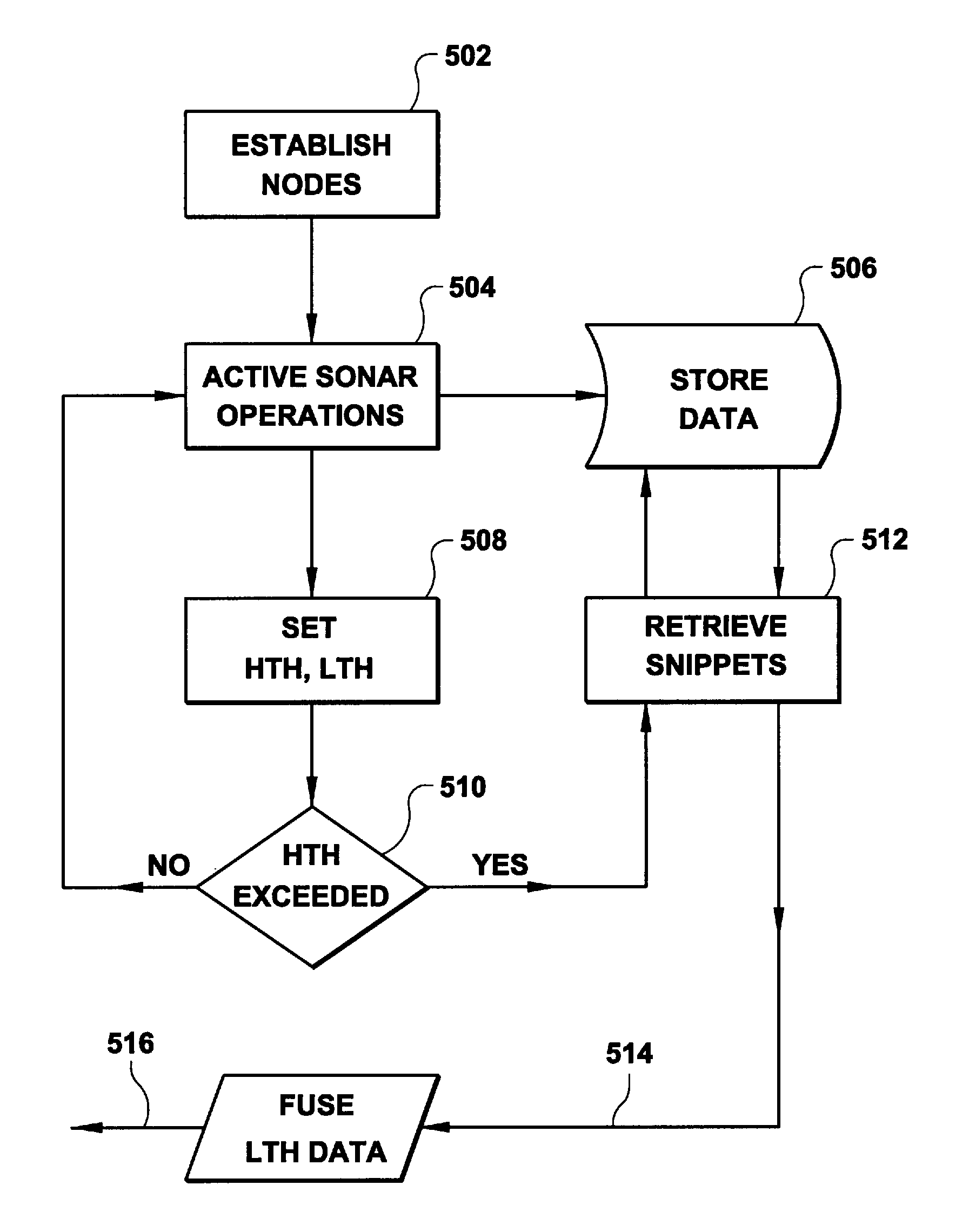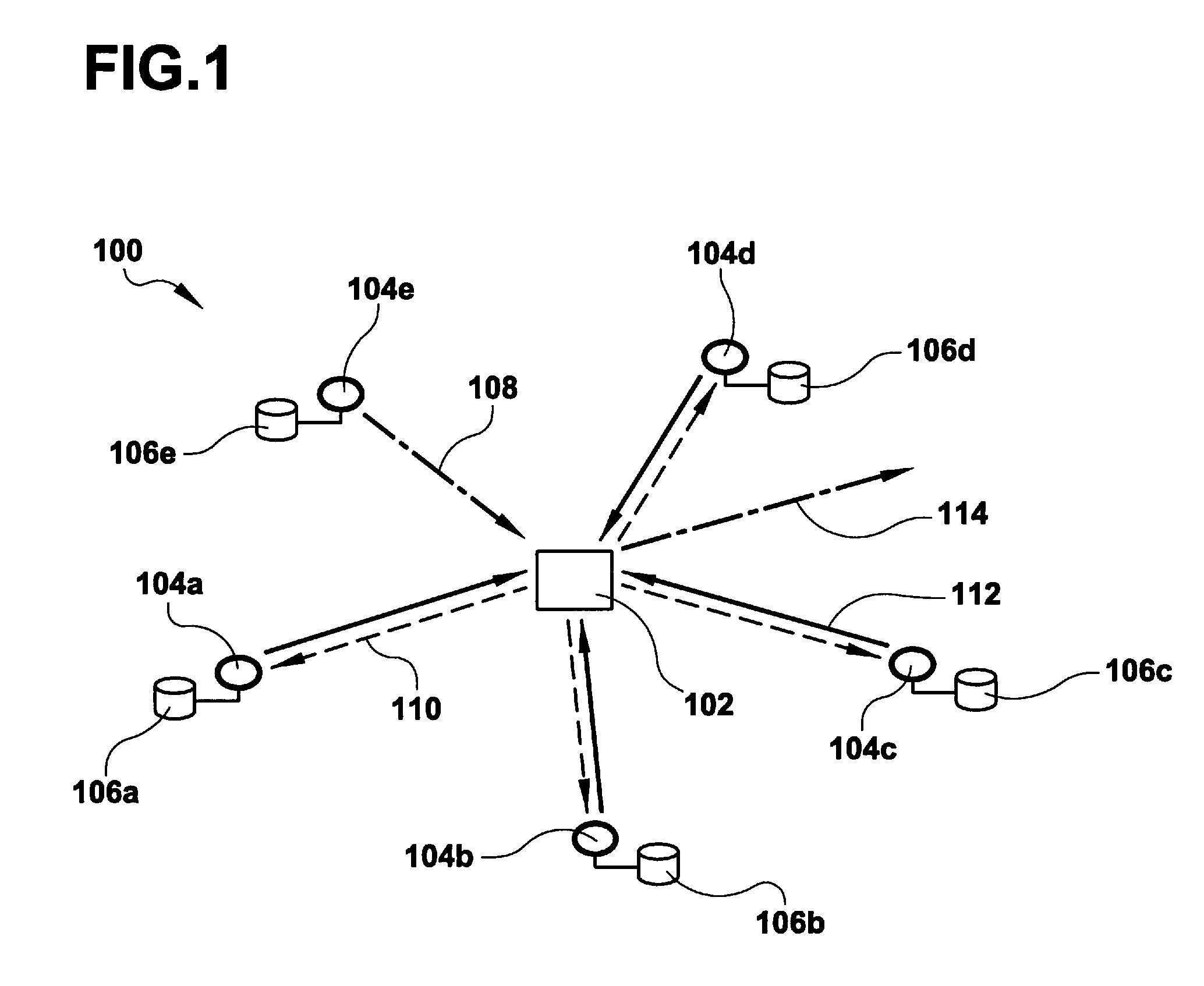Multi-static object tracker using specular cue initiation and directed data retrieval
a multi-static object and data retrieval technology, applied in the field ofsonar systems, can solve the problems of unrealizable benefits of such systems, unacceptably high false alarm rate of data fusion algorithms, and corresponding increases in data rate, etc., and achieve the effect of high threshold
- Summary
- Abstract
- Description
- Claims
- Application Information
AI Technical Summary
Benefits of technology
Problems solved by technology
Method used
Image
Examples
Embodiment Construction
[0016]Referring now to the Figures, and more specifically to FIG. 1, a multistatic sonar tracking system in accordance with an embodiment of the present invention is shown and is designated by reference character 100. As shown, system 100 includes a fusion center 102, and a plurality of sensor nodes, of which nodes 104a-104e are representative, that are linked to fusion center 102 via two way data links (not shown). Each sensor node is connected to a respective local data storage center 106; the sensors nodes 102 conduct active sonar operations and stow the resultant data in the local data storage centers 106.
[0017]Upon receiving a specular cue 108 from a representative node (in this case, node 104e), fusion center 102 initiates a data request to the other nodes 104a-104d for locally stored data that geographically corresponds to the specular cue, as indicated by arrows 110a-110d. In response, data snippets 112 are transmitted to fusion center 102 and fused into an output track for ...
PUM
 Login to View More
Login to View More Abstract
Description
Claims
Application Information
 Login to View More
Login to View More - R&D
- Intellectual Property
- Life Sciences
- Materials
- Tech Scout
- Unparalleled Data Quality
- Higher Quality Content
- 60% Fewer Hallucinations
Browse by: Latest US Patents, China's latest patents, Technical Efficacy Thesaurus, Application Domain, Technology Topic, Popular Technical Reports.
© 2025 PatSnap. All rights reserved.Legal|Privacy policy|Modern Slavery Act Transparency Statement|Sitemap|About US| Contact US: help@patsnap.com



